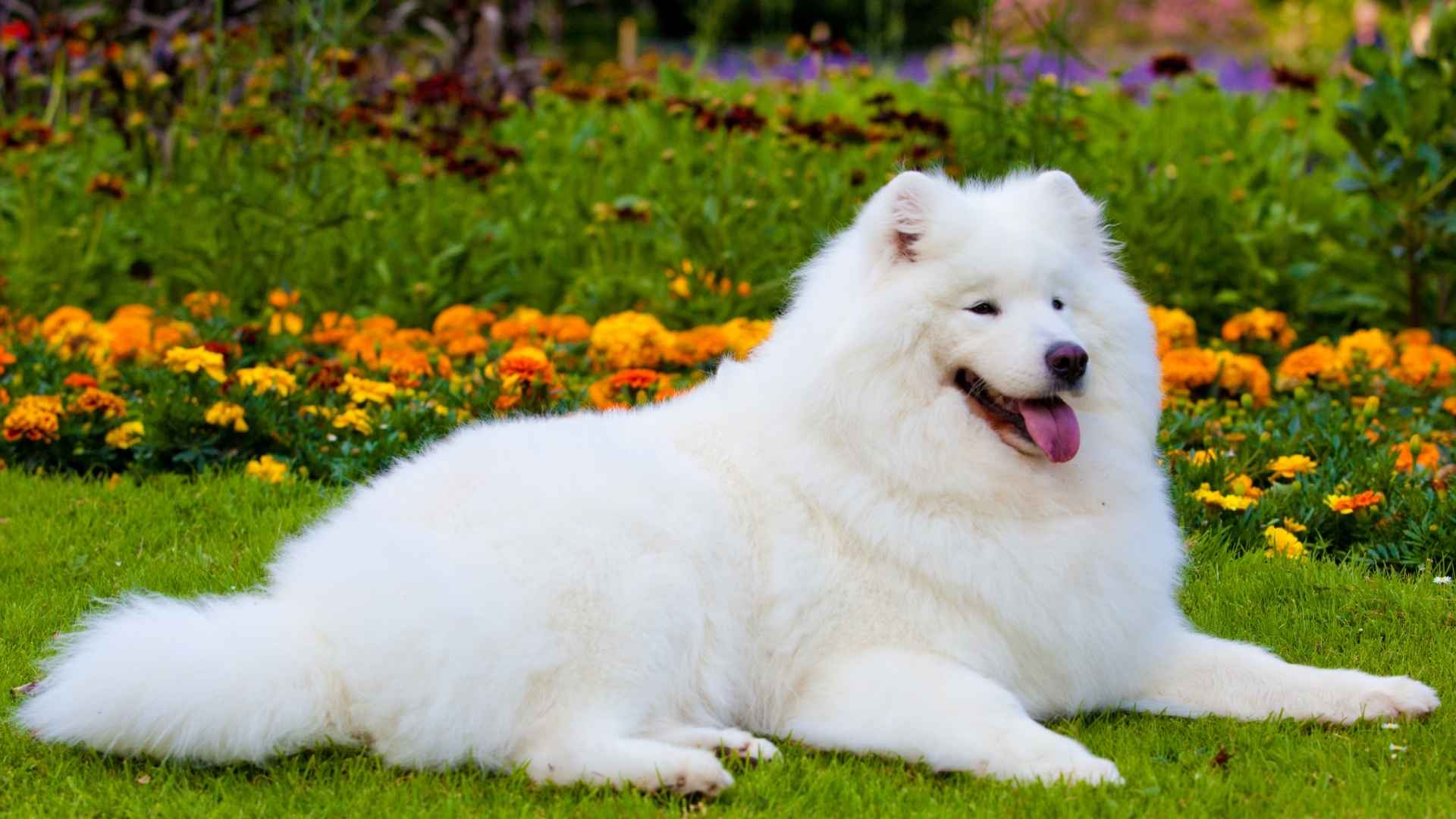In the world of canines, some dogs are so furry that you just want to dive into their fur. Full-coat dog breeds have that magic! These fluffy companions turn heads with luxurious, flowing coats that look like a fairytale. But here’s the thing—owning one isn’t just about admiring that thick, gorgeous fur. It comes with responsibilities, from regular brushing to keeping their coats free of tangles, mats, and debris.
Thinking of bringing one home? Be ready for some serious grooming sessions! These dogs don’t just shed; they can leave a mini fur-storm behind if not properly maintained. But don’t let that scare you—if you love the idea of a soft, fluffy companion and don’t mind a little extra work, the reward is worth it.
So, what makes these breeds so special? Aside from their stunning coats, they’re often affectionate, playful, and downright charming. Ready to meet some of the fluffiest canines out there?
Full Coat Dog Breeds
1. Afghan Hound
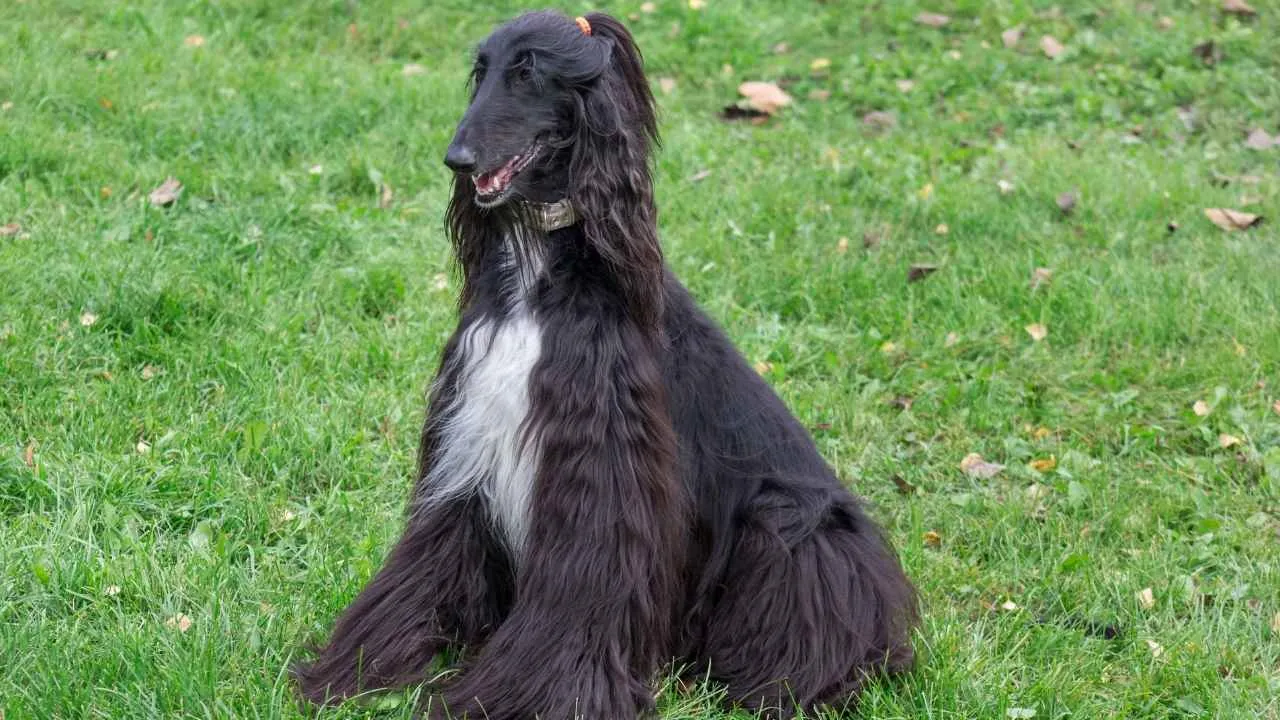
Graceful, glamorous, and utterly stunning—Afghan Hounds are the supermodels of the dog world! With their long, silky coats that flow effortlessly as they move, these dogs have an unmistakable air of royalty. But underneath all that luxurious fur is an athletic and playful spirit. Originally bred for hunting in the rugged mountains of Afghanistan, these dogs combine beauty with incredible speed and agility.
Afghan Hounds require dedicated grooming to keep their fine, silky fur free of tangles and mats. Regular brushing, occasional baths, and careful drying are a must. Their coat isn’t just for looks—it once protected them from harsh climates, making them surprisingly resilient despite their delicate appearance.
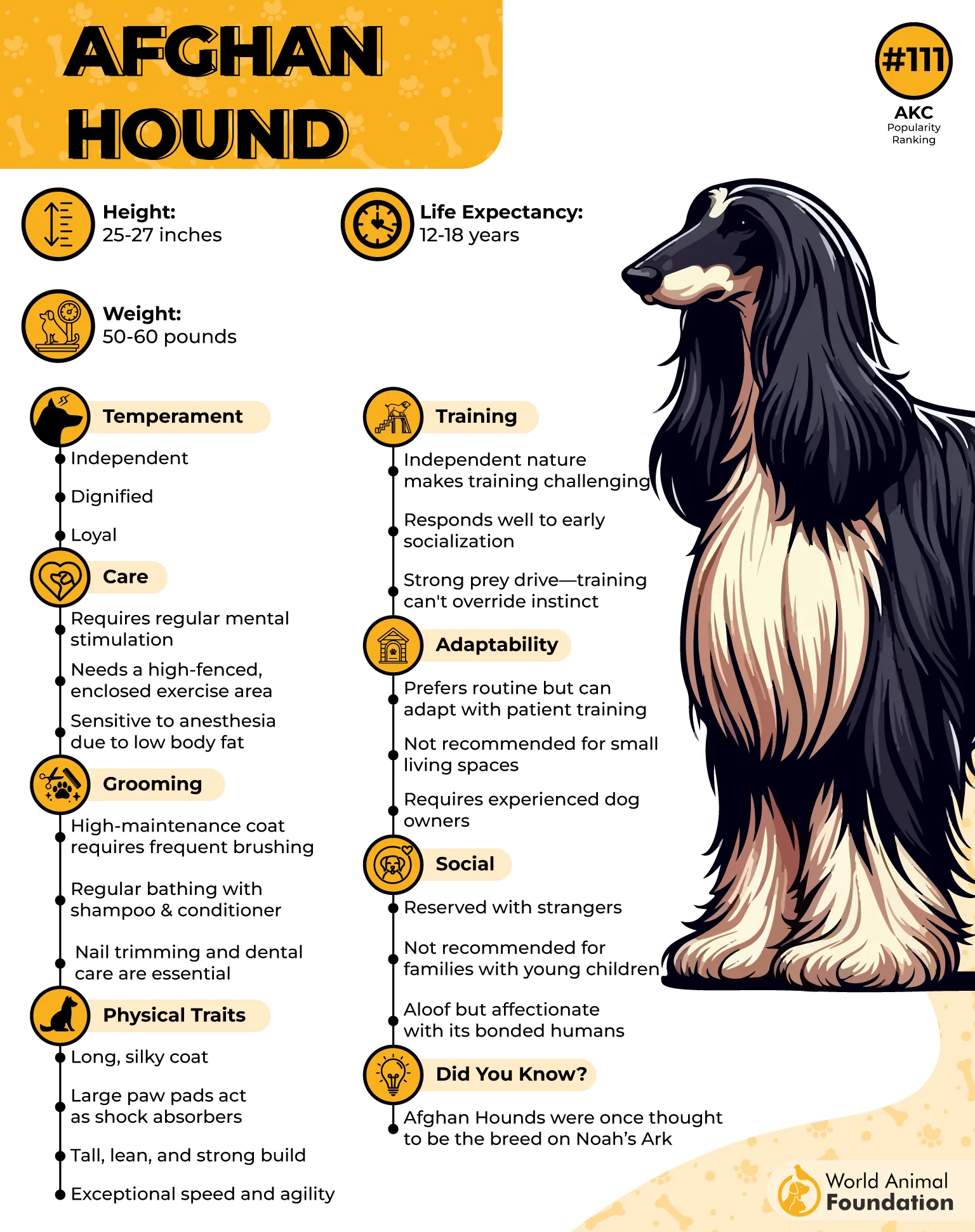
Beyond their stunning looks, Afghan Hounds have an independent and sometimes aloof personality. They adore their families, but they won’t always be the type to follow you around like a shadow. Instead, they maintain an elegant air of mystery, choosing affection on their own terms.
According to Royal Canin, these dogs are surprisingly playful, with a mischievous streak that can keep you on your toes. They love to zoom around open spaces, showcasing their natural grace and speed. But training them? That’s where things get interesting. Afghan Hounds have a strong-willed nature; they respond best to patient, reward-based training rather than strict commands.
Afghan Hounds thrive in homes with plenty of exercise and mental stimulation. While they may look delicate, they have an adventurous side and love outdoor activities. Long walks, runs, and even lure coursing are great ways to keep them happy. Without enough exercise, they can become bored and even a little stubborn.
2. Maltese
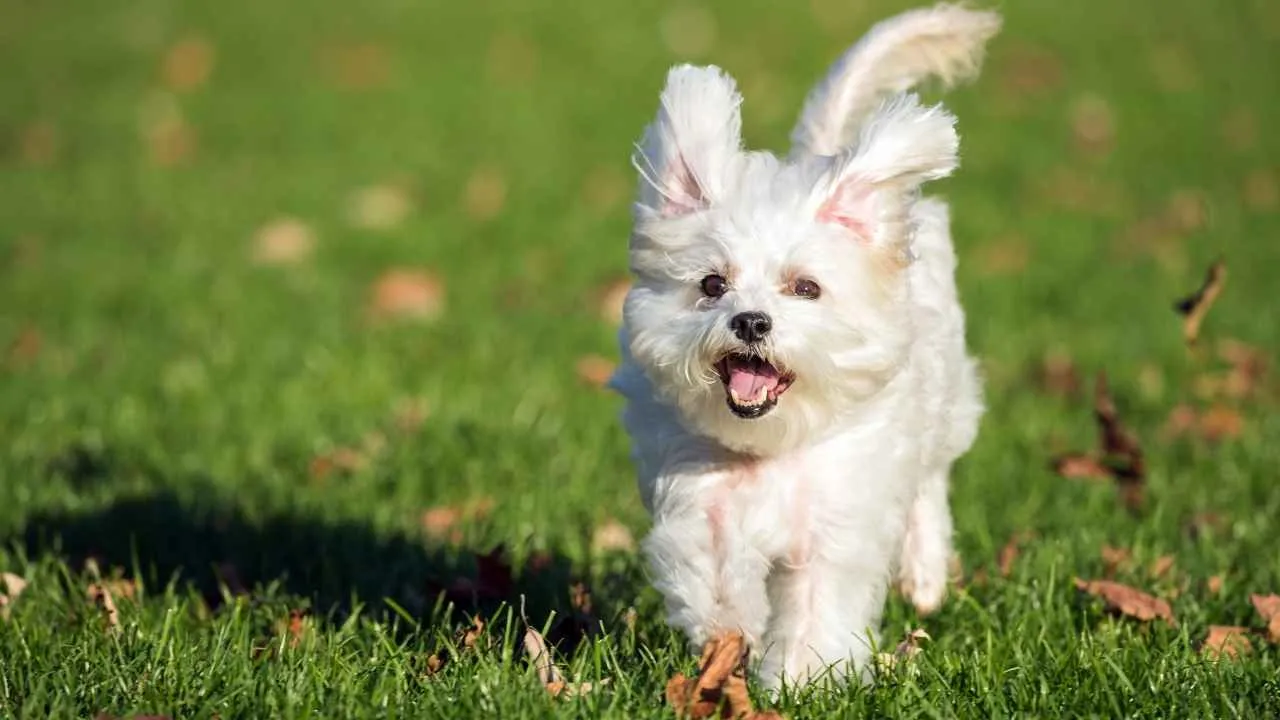
Maltese looks like a floating cotton ball. This toy breed is famous for its silky, snow-white coat that drapes to the ground like a royal robe. This fluff is a lively, confident little dog with a huge personality. Maltese may be a small-sized dog, but they carry themselves like they own the place, charming everyone with their elegance and playful spirit.
Maltese dogs don’t have an undercoat, which means they don’t shed as much. But that doesn’t mean maintenance is easy! Their fine, silky fur is prone to tangling, so daily brushing is necessary. Want that show-quality look? Many owners opt for professional grooming, while others keep their Maltese in a “puppy cut” for easier upkeep.
Did you know these fluffy companions were once the favorites of aristocrats and royals? That’s right! The Maltese has been around for centuries, often spotted on the laps of nobles and even depicted in Renaissance paintings. But don’t let their regal history make you think they’re delicate—these little dogs are energetic and love to play.
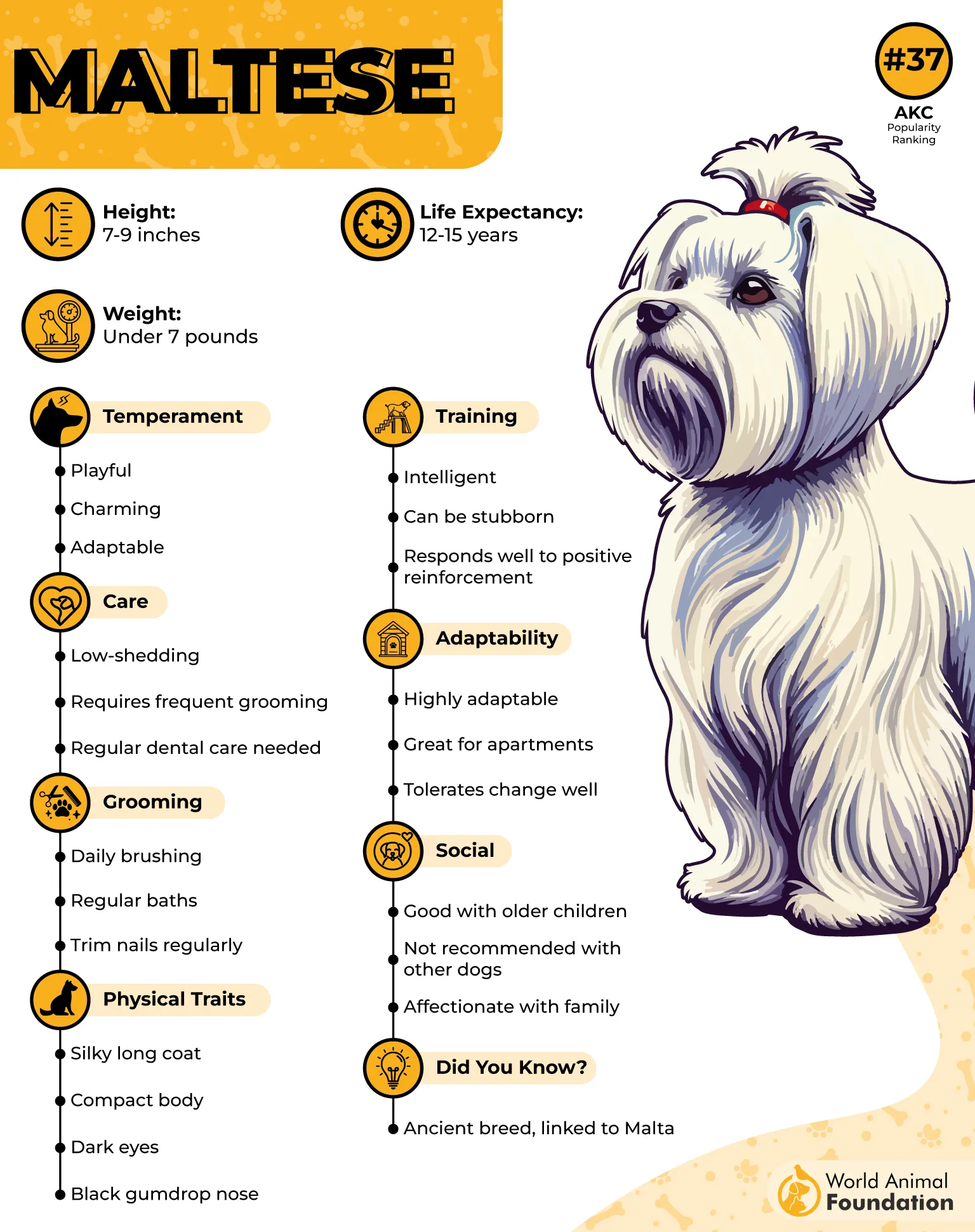
Maltese is a true extrovert. According to AKC, they are highly intelligent, adore attention, and thrive in human company. Unlike some independent breeds, these dogs prefer to be beside you. They’re the ultimate lapdogs, showering their owners affectionately and expecting the same in return.
Worried about health issues? The Maltese are generally a sturdy breed, but they do have some sensitivities. Their eyes are prone to tear staining, which requires regular cleaning, and their small size makes them vulnerable to injuries if handled too roughly. They also need good dental care since toy breeds are more prone to dental issues.
3. Briard
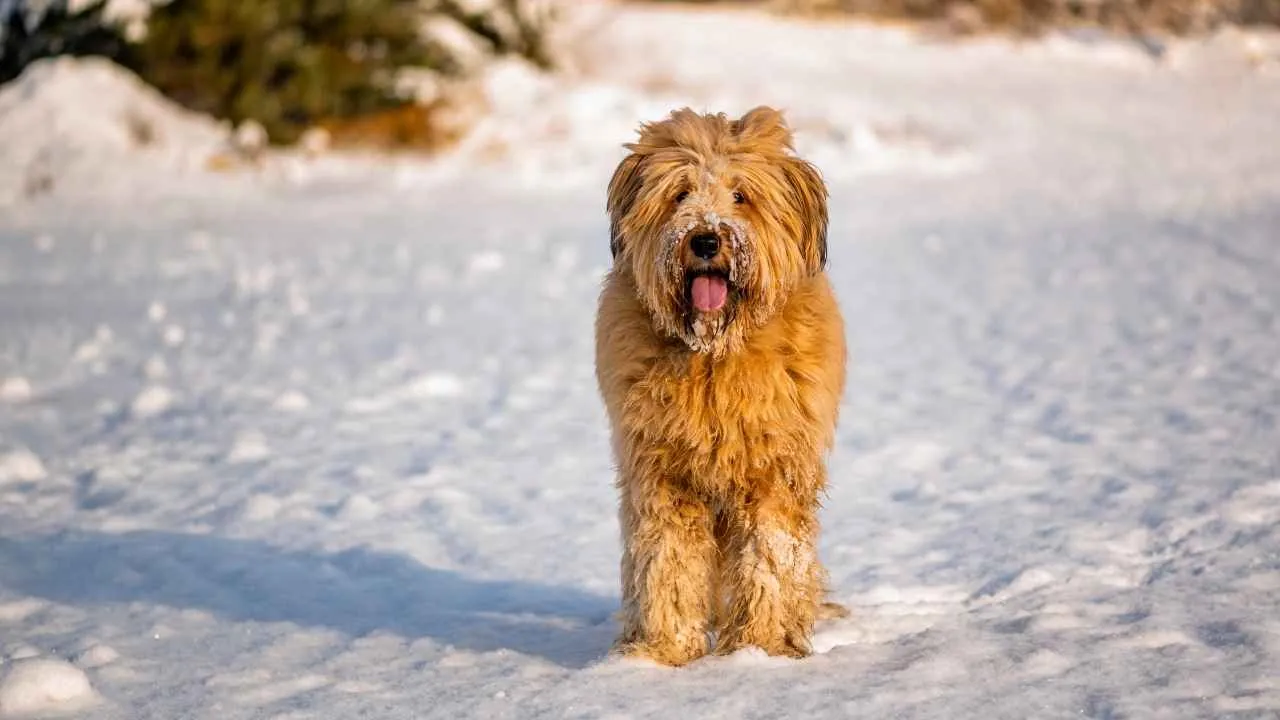
Meet the Briard! This French herding breed is known for its long, slightly wavy double coat that gives it a rugged yet elegant appearance. But beneath that thick fur lies a highly intelligent, protective, and affectionate dog with a deep sense of loyalty. Bred to guard and herd livestock, the Briard is both a fierce protector and a loving companion.
That luxurious coat is designed to handle harsh weather conditions. The dense undercoat provides insulation, while the long, water-resistant topcoat keeps them dry and protected. But with great fur comes great responsibility! Their coat requires regular brushing to prevent mats and tangles, especially around the ears, legs, and belly.
One of the most striking features of the Briard? Their expressive eyes are often hidden beneath their shaggy bangs. But don’t let that fool you—these dogs are incredibly observant and always aware of their surroundings. In fact, they’re known as “hearts wrapped in fur” because of their deep emotional connection with their owners.
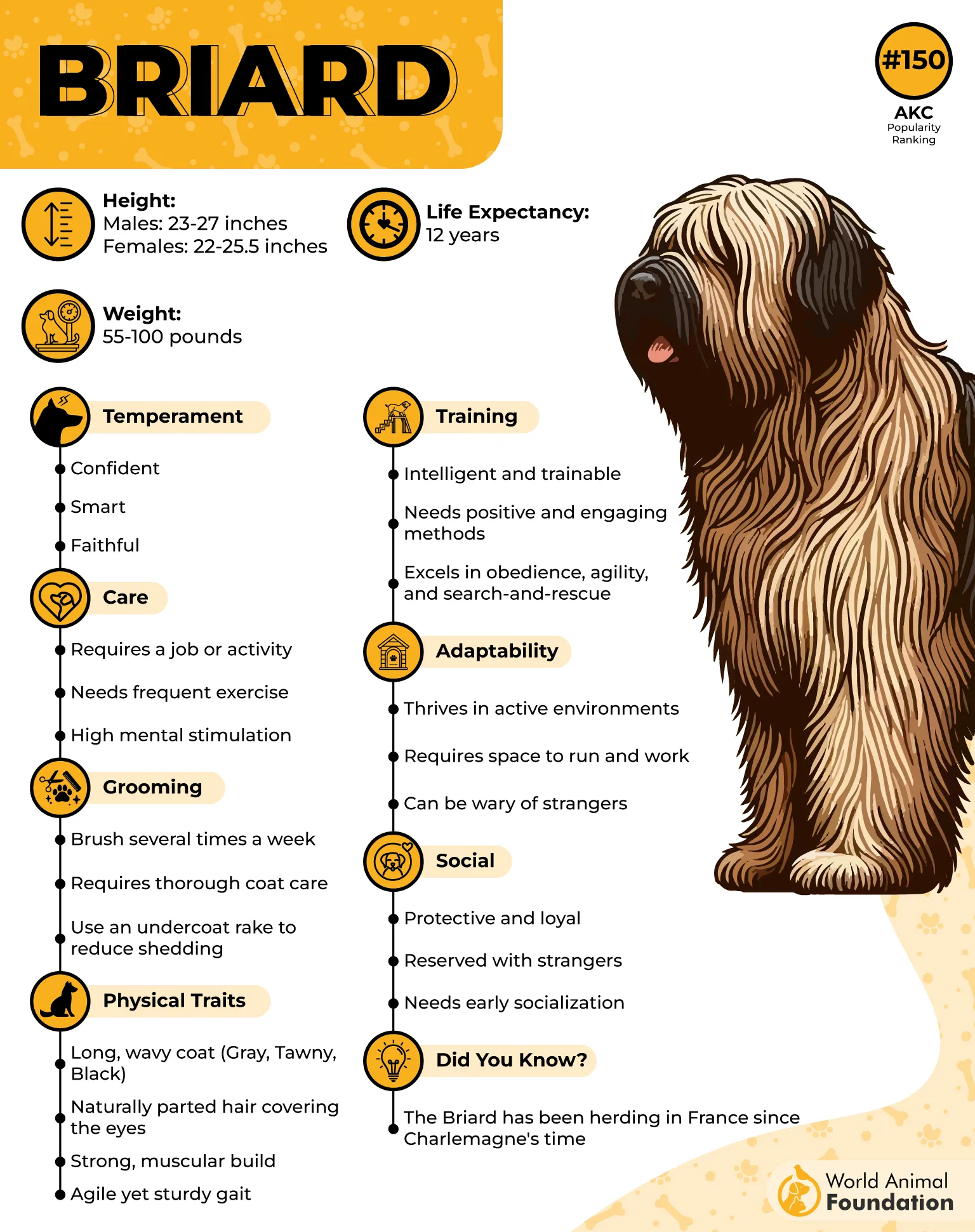
According to AKC, they’re brilliant and loyal dogs with a natural instinct to protect, but they also have a strong-willed nature. Early training and socialization are crucial to help them develop into well-mannered family members. They respond well to positive reinforcement, and once they bond with their owner, they’ll go to great lengths to please.
Despite their guardian instincts, Briards have a playful, goofy side that makes them fun companions. They love interactive games, long walks, and even agility training. Herding is in their blood, so don’t be surprised if they try to “round up” kids, other pets, or even their humans! Their energy levels require an active lifestyle.
4. Komondor
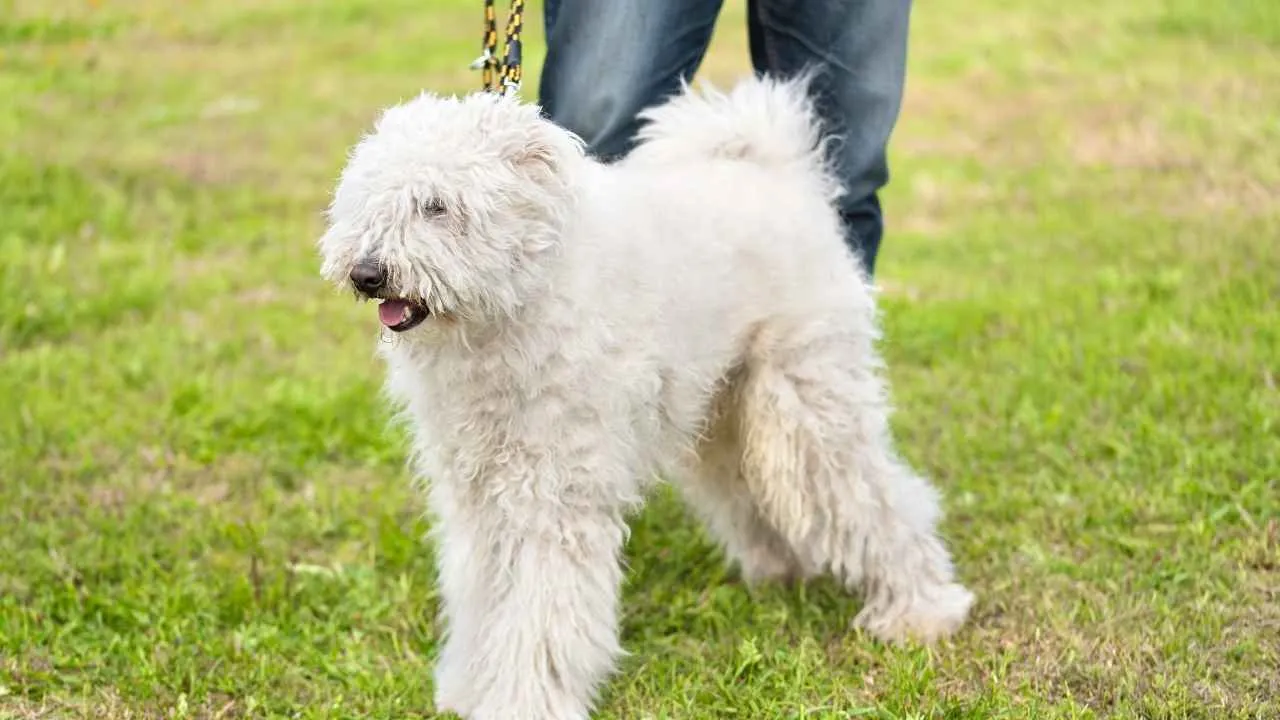
This Hungarian livestock guardian is instantly recognizable by its long, corded coat, which forms naturally into thick, rope-like strands. But beneath all those cords lies a powerful, fearless, and highly intelligent protector. Traditionally bred to guard sheep, the Komondor is one of the most devoted and vigilant watchdogs.
Unlike other long-haired breeds, their coat naturally locks into cords as they grow, requiring careful separation to prevent matting. Grooming a Komondor is no small task, but here’s the upside: they hardly shed! Instead of loose fur everywhere, their hair stays within the cords.
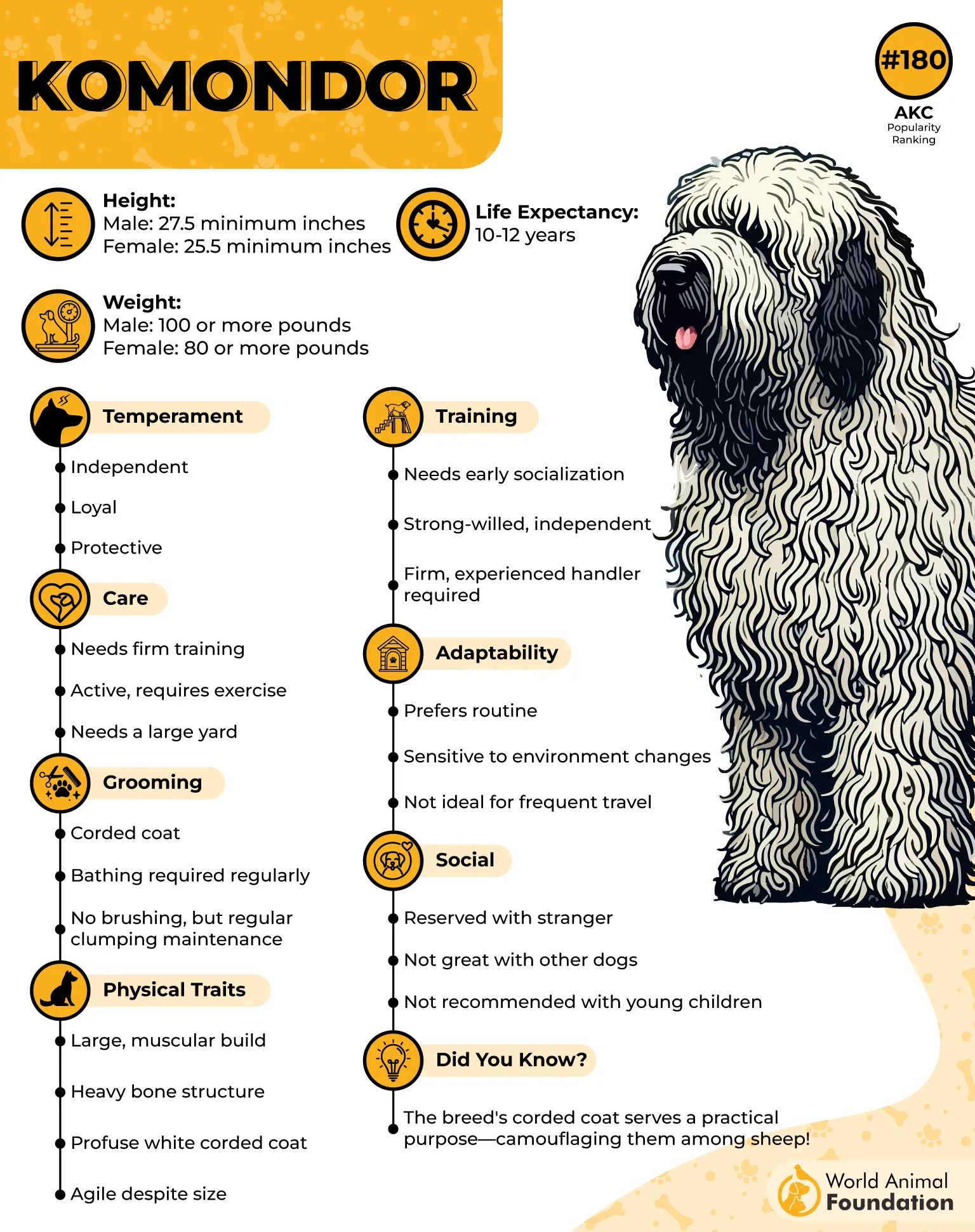
Thinking about training a Komondor? Patience is key! According to AKC, these dogs are incredibly smart but also highly independent. Since they were bred to work alone, making decisions without human direction, they don’t always follow commands like a traditional obedience-driven breed.
Regarding energy levels, Komondors are more about endurance than hyperactivity. They don’t need endless hours of play but require space to roam and a job to do. They can become stubborn or even destructive without enough mental and physical stimulation. Whether it’s guarding, structured exercise, or advanced training, they thrive when given a sense of purpose.
One challenge many owners don’t anticipate? Bathing a Komondor. Their thick cords take forever to dry! Unlike dogs with traditional fur, their coat holds water like a sponge, which means drying can take an entire day after a bath. And while they don’t need frequent baths, their fur requires careful maintenance to stay clean and healthy.
5. Puli
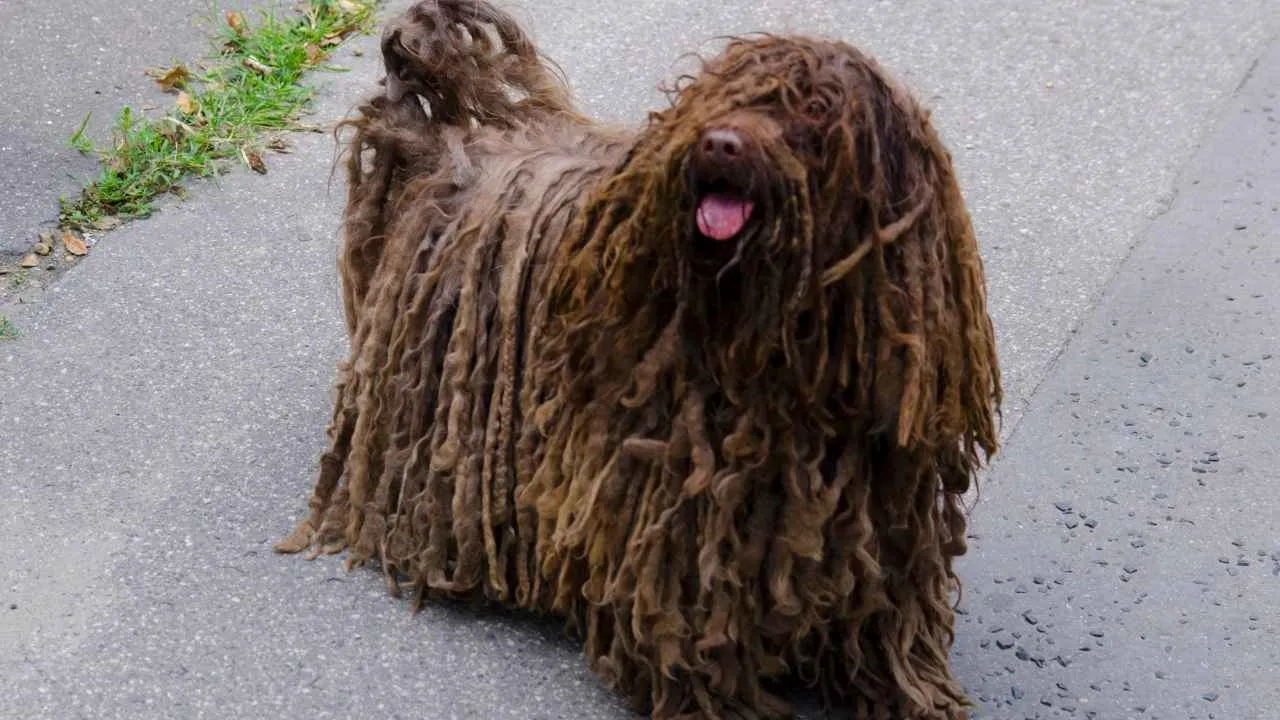
This herding breed is famous for its naturally corded coat, which forms thick, woolly ropes over time. They are agile, high-energy dogs that are always on the move. Bred to herd sheep, the Puli is fast, intelligent, and incredibly alert, making it an excellent watchdog and working companion.
That signature coat is a built-in weather shield. The Puli’s dense, waterproof cords protect against extreme temperatures, keeping them warm in winter and cool in summer. Their fur naturally clumps into cords, requiring careful separation to prevent matting. Surprisingly, they don’t shed much, but maintaining their unique look does take effort.
What really sets the Puli apart? Their boundless energy and lightning-fast reflexes! These dogs are natural athletes with an impressive ability to jump, spin, and dash around at top speed. They rely on quick movements and sharp instincts to keep everything in order. Pulik (plural for Puli) needs plenty of exercise and mental challenges to stay happy.
According to PetMD, they’re incredibly smart but have a strong independent streak. This means they learn quickly, but they won’t always obey blindly. A bored Puli will find ways to entertain itself, which often includes mischief! Positive reinforcement and consistent training help shape them into well-mannered pets.
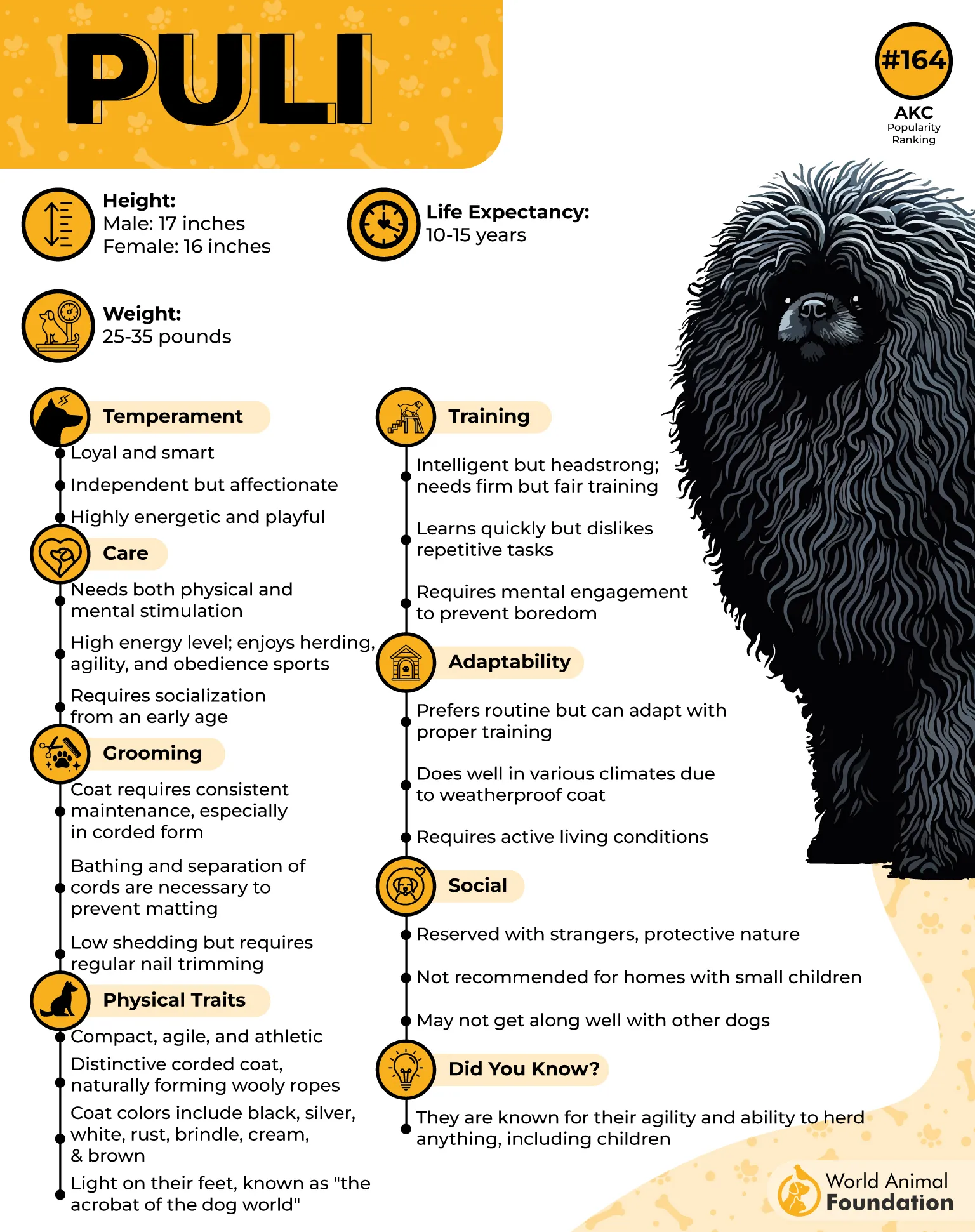
Despite their working-dog roots, Pulik also has a playful, clownish side. They love interactive games, obstacle courses, and anything that keeps them moving. Their agility and enthusiasm make them stand out in dog sports like agility trials and obedience competitions. This dog is entertaining and highly trainable.
6. Pekingese
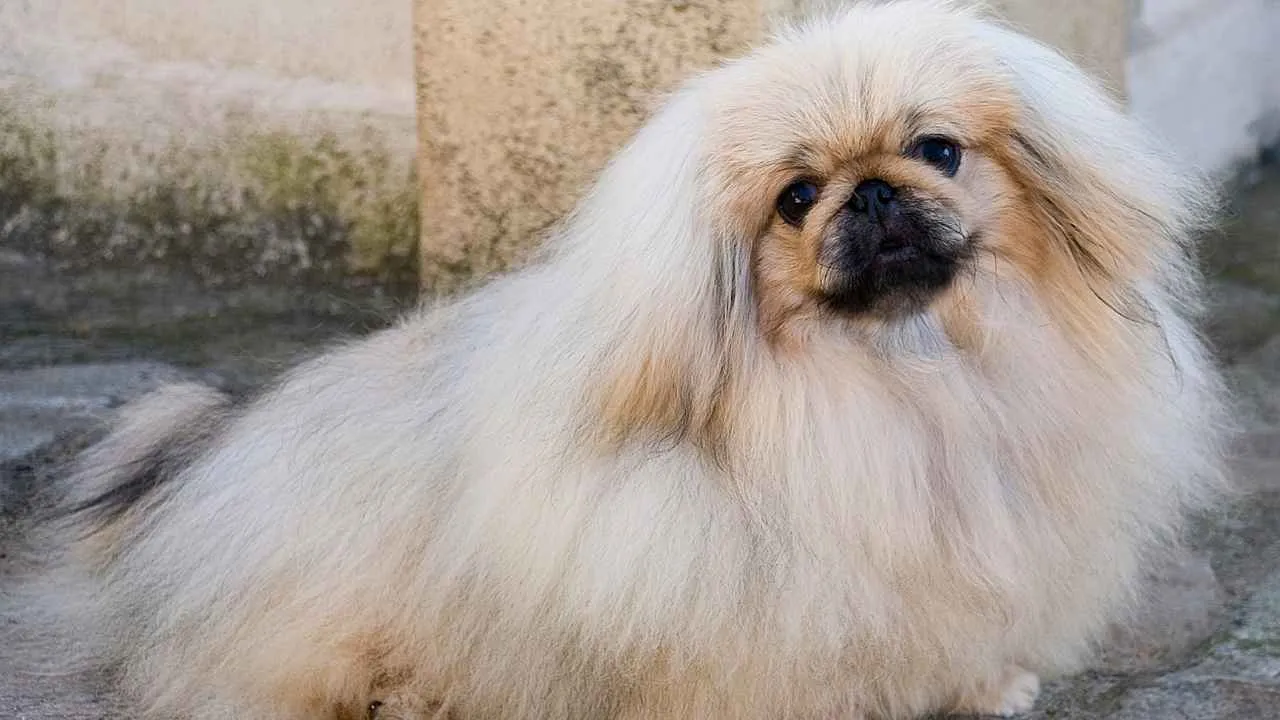
Originally bred as companions for Chinese emperors, these little dogs still carry themselves as if they belong on a throne. With their flowing mane-like coat, confident strut, and dignified air, they’re every bit as regal as their history suggests. Pekingese have larger-than-life personalities and won’t hesitate to tell you who’s boss!
That luxurious double coat served as a status symbol in ancient China. The long, flowing fur was a sign of nobility, and only the elite could own these cherished dogs. While their coat is undeniably stunning, it does require regular upkeep. Daily brushing helps prevent tangles and keeps their fur looking pristine.
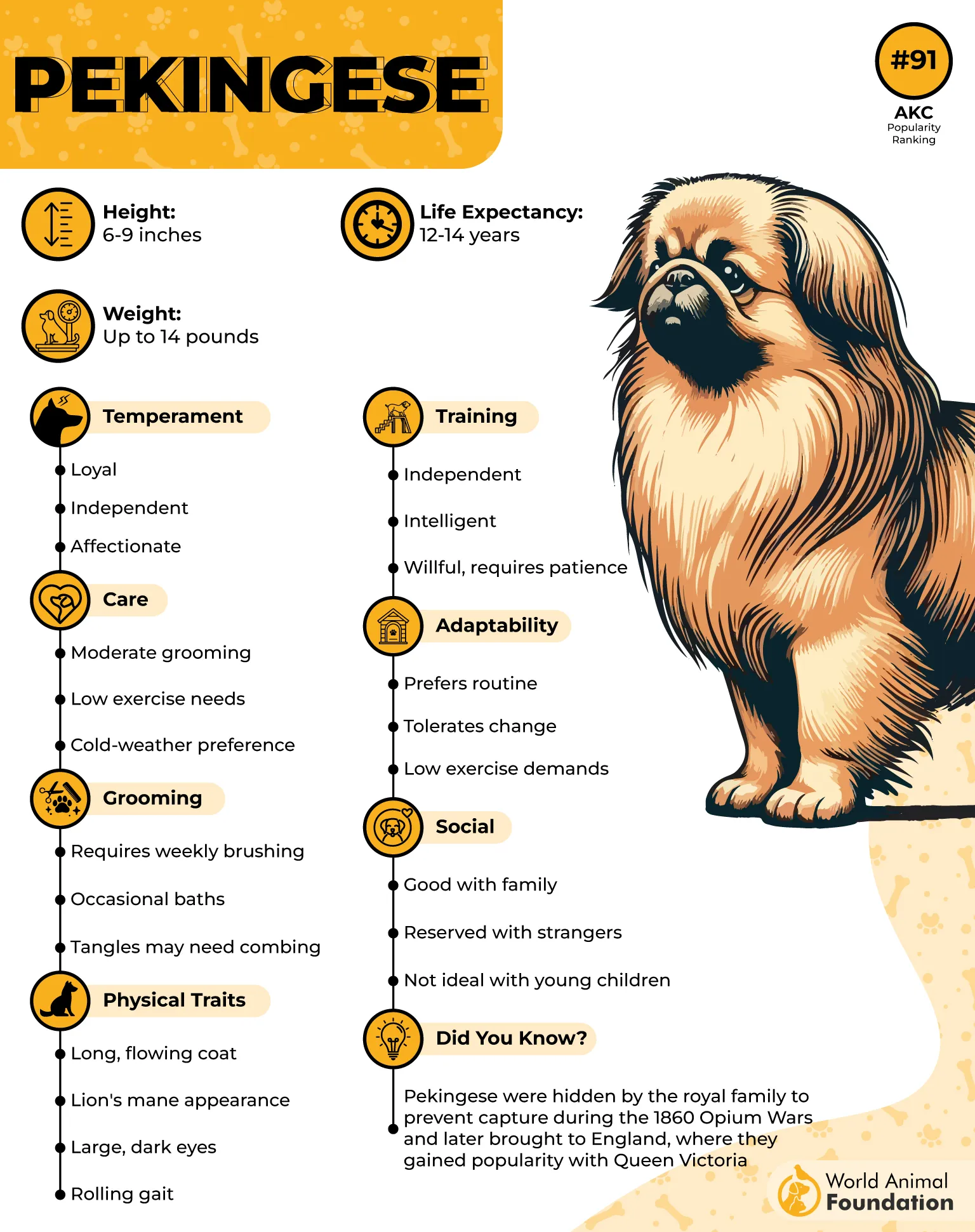
Pekingese are incredibly affectionate with their families despite their aristocratic attitude, says PetMD. They form deep bonds with their owners and love to be pampered and adored. However, they’re not the type to seek constant attention—they enjoy their independence and prefer affection on their own terms.
They’re intelligent, but their stubborn streak makes them a challenge for first-time dog owners. Unlike eager-to-please breeds, they don’t always see the point of following commands. Consistent training is key, but don’t expect them to perform tricks to impress you—they prefer doing things their way!
Wondering about their energy levels? Pekingese aren’t high-energy dogs, but they do have bursts of playfulness. They enjoy short walks and indoor play, but they’re just as happy lounging in their favorite spot, surveying their kingdom. Their small size makes them ideal for apartment living, but their bold personality ensures they’re never overlooked.
7. Tibetan Terrier
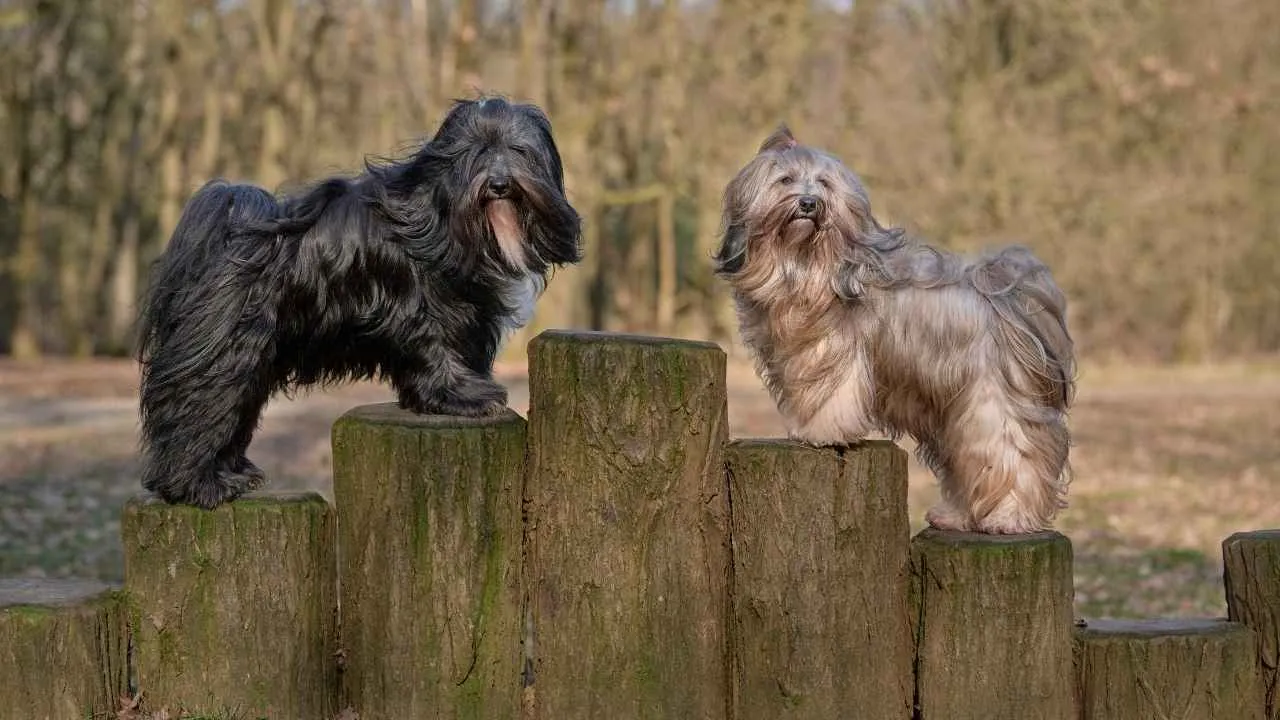
Tibetan Terrier has been considered a symbol of fortune for centuries! Bred by monks in the Tibetan mountains, these dogs weren’t just companions—they were treasured as spiritual protectors and gifted as signs of prosperity. With their thick, flowing coats and soulful eyes, they have an almost mystical presence, but they’re also full of playful energy!
Originating in the harsh Tibetan climate, their long, double-layered fur insulates against both cold and scorching heat. According to Orvis, the undercoat is soft and woolly for warmth, while the outer layer is long and fine, repelling dirt and moisture. Their fur naturally resists matting.
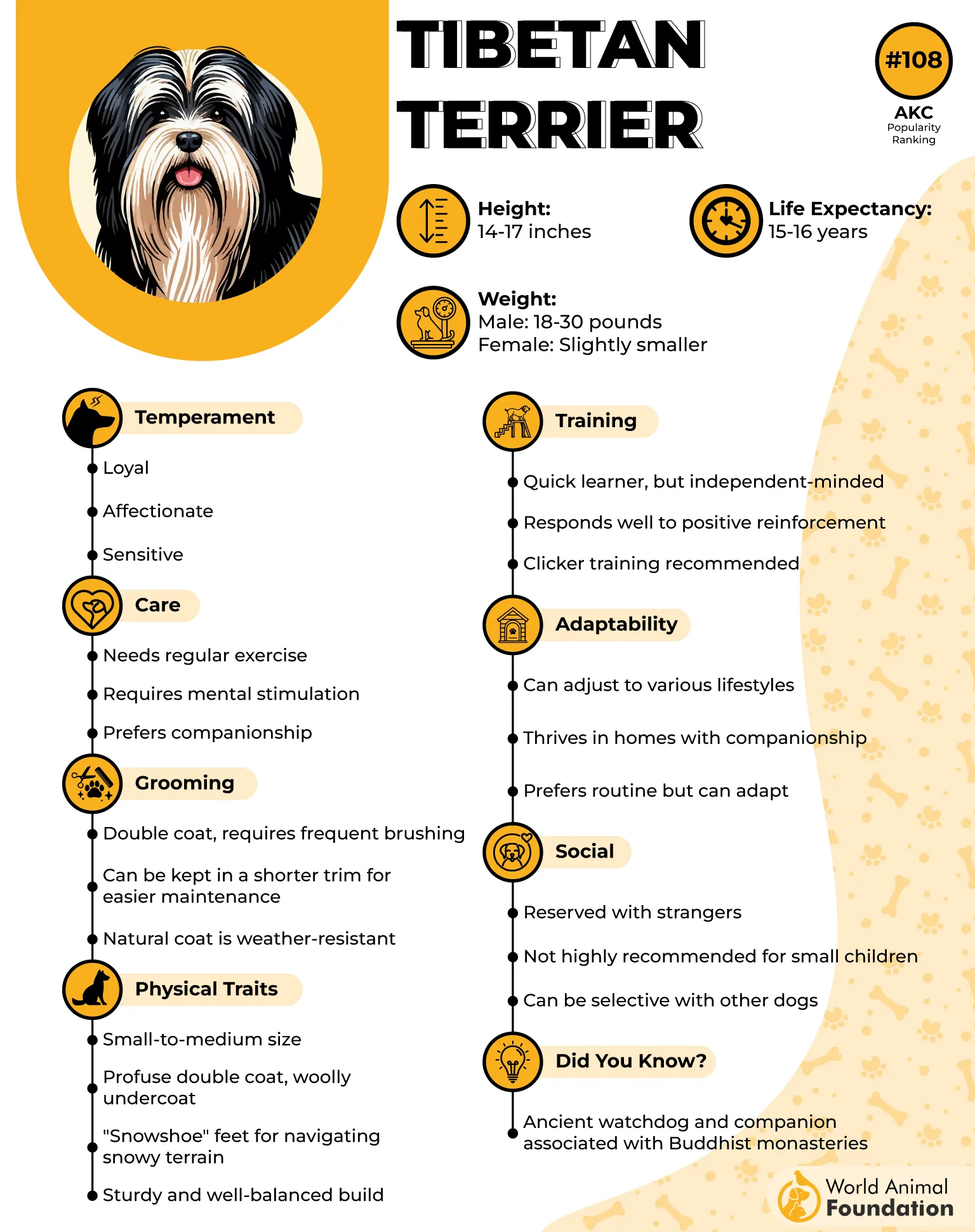
What sets the Tibetan Terrier apart? Their remarkable adaptability! Whether climbing rocky mountain paths or running across grassy fields, they easily navigate any terrain. Their large, flat, snowshoe-like paws give them excellent grip, making them sure-footed and agile. This unique trait made them invaluable to Tibetan travelers, who relied on them to traverse rough landscapes.
Personality-wise, Tibetan Terriers are a mix of affection and independence. They adore their families and thrive on companionship but aren’t overly clingy. They like to be near their people but won’t constantly demand attention.
Despite their thick coats, Tibetan Terriers aren’t heavy shedders, but their grooming needs can’t be ignored. Regular brushing keeps their fur from tangling, and occasional trims help manage their length. They also need routine cleaning around their eyes and ears, as their long fur can sometimes trap debris.
8. Havanese
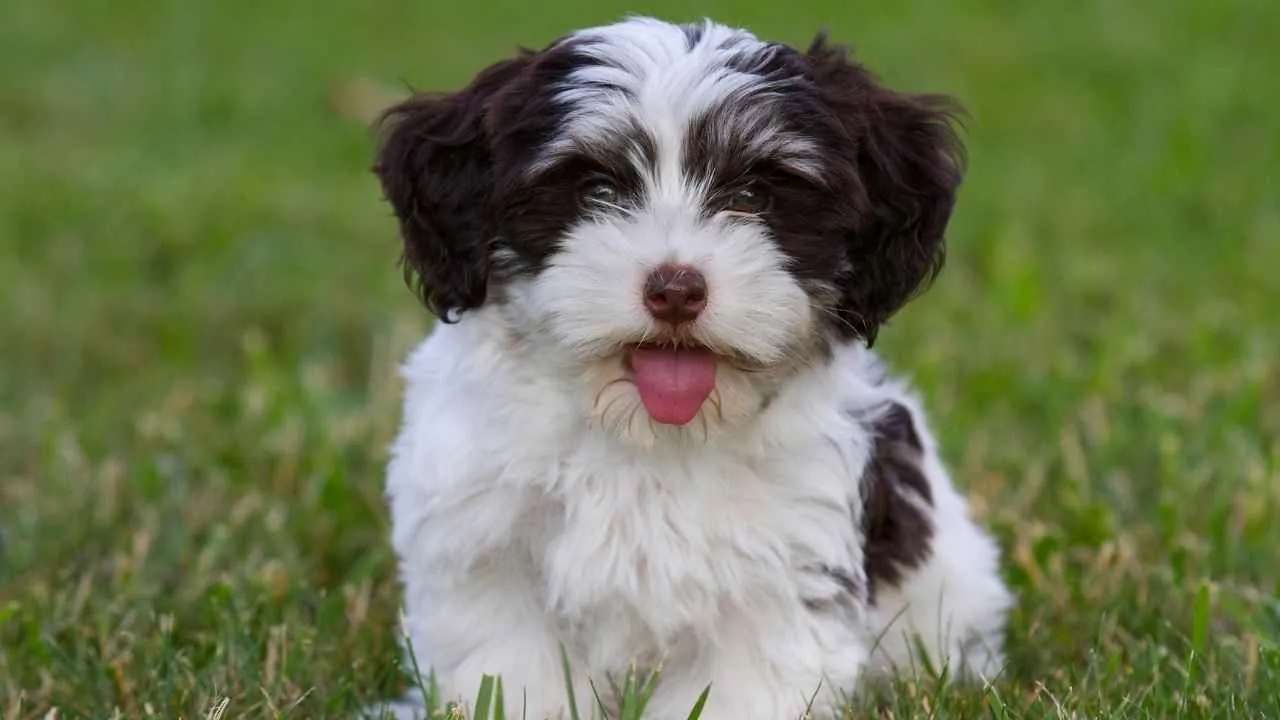
This charming little breed thrives on companionship and is happiest when surrounded by people. Developed as lapdogs for the Cuban aristocracy, they’ve maintained their status as affectionate, people-loving companions. With their silky, flowing coats and expressive eyes, it’s impossible not to fall in love with their cheerful personality!
Havanese’s fur is light and airy, helping to keep them cool in warm weather. Their double coat provides protection without weighing them down, but requires regular grooming to prevent tangles. Many owners opt for a shorter “puppy cut” to make maintenance easier while still preserving their signature fluffiness.
The Havanese is one of the most family-friendly toy breeds. According to PetMD, they’re gentle, affectionate, and patient, making them wonderful companions for children. They also get along well with other pets, from fellow dogs to cats. Their sociable nature means they don’t like being left alone for long periods.

Ever seen a dog that prances when it walks? The Havanese have a distinctive, springy gait that makes them look like they’re dancing! This unique movement is a result of their well-muscled legs and compact build. It adds to their charm and makes watching them even more delightful.
Despite their small size, they have big watchdog instincts. They won’t hesitate to alert you if someone’s at the door, but they’re far from aggressive dogs. Once they see a stranger who means no harm, they quickly warm up and shower them with affection. Their alert but friendly demeanor makes them excellent companions for those looking for a social yet protective little pup.
9. Yorkshire Terrier
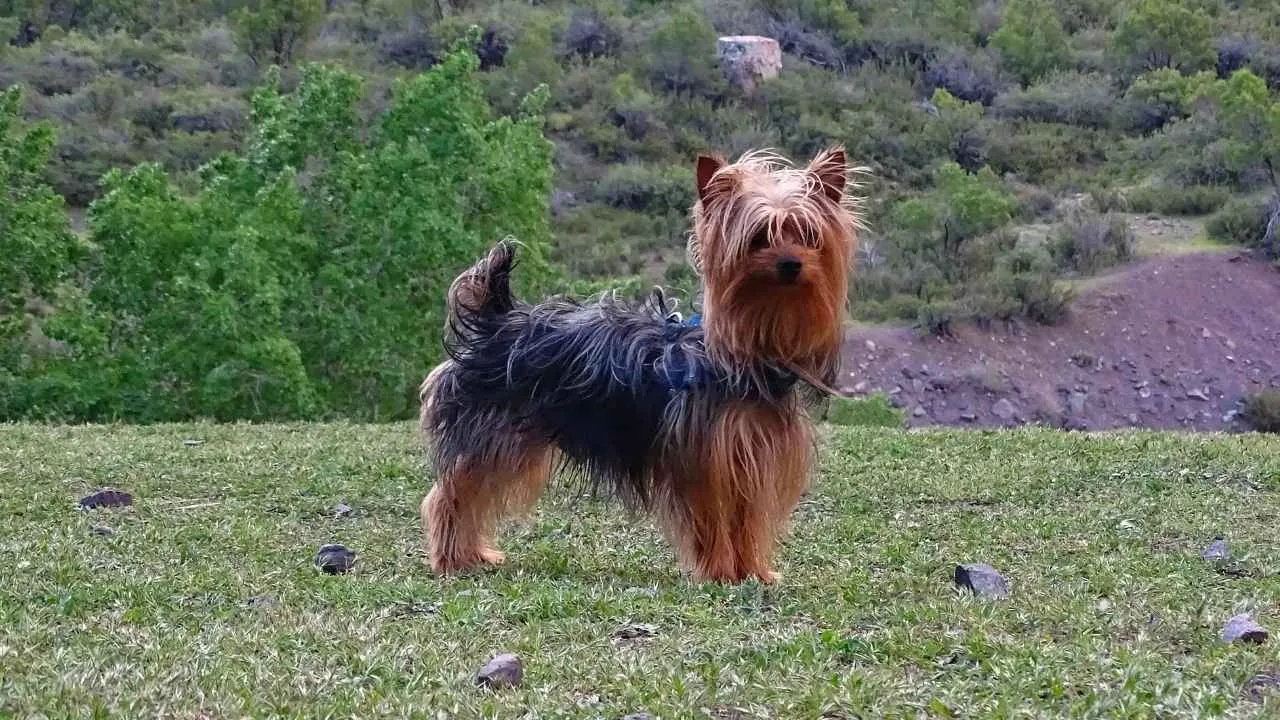
Yorkshire Terriers, or Yorkies, may be tiny, but they’ve got bold, confident personalities that can rival even the biggest breeds. Bred as rat hunters in England’s textile mills, they quickly became prized as fashionable lapdogs. With their long, silky coats and feisty attitudes, these little dynamos are a perfect mix of elegance and spunk!
Yorkies have hair similar to humans, meaning it keeps growing and doesn’t shed much. This makes them a great choice for allergy sufferers, but their luscious locks require consistent grooming to prevent tangles. Whether kept long and flowing or trimmed short for easy maintenance, their coat always makes a statement.
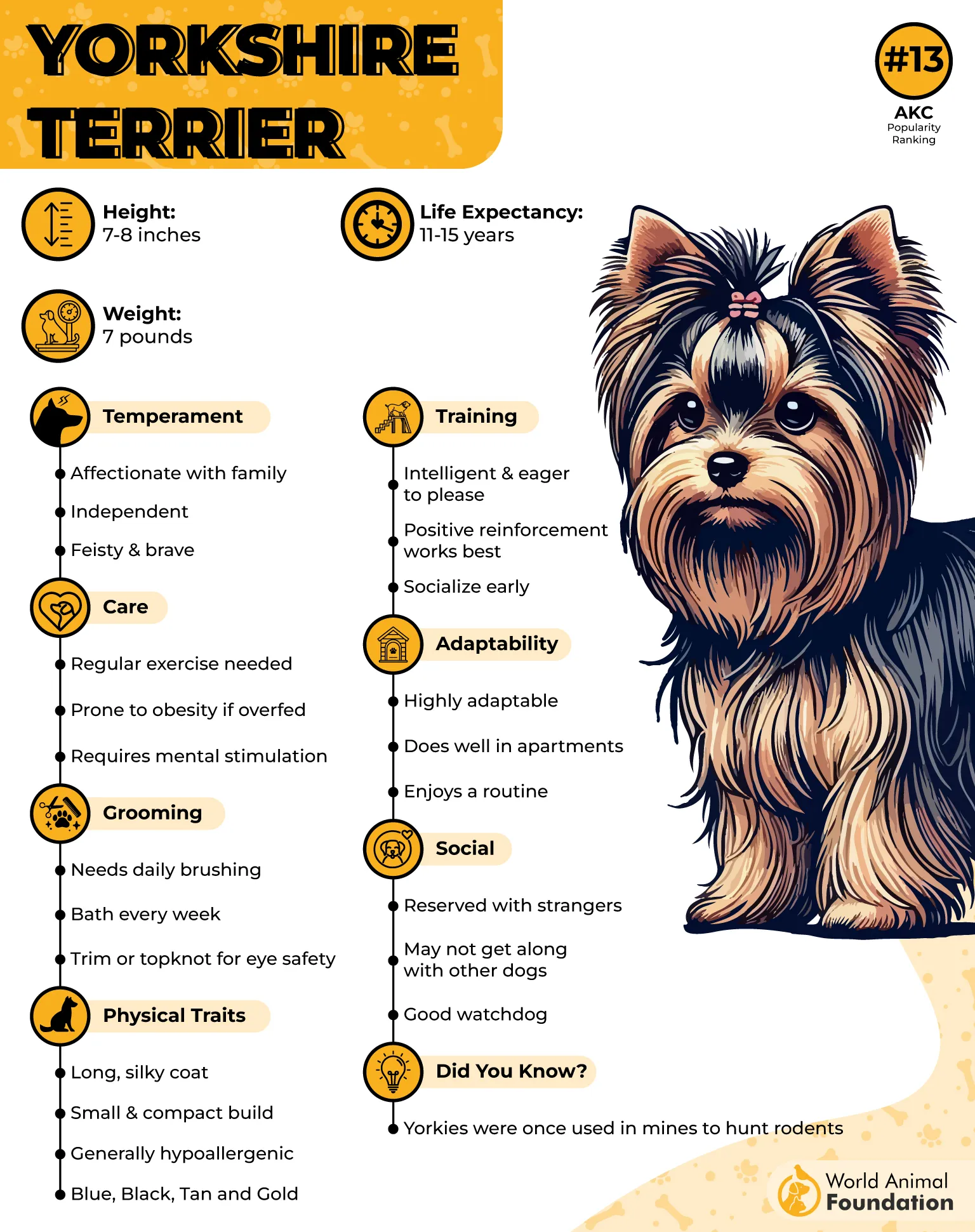
Yorkies have big-dog energy packed into a tiny frame! They’re lively, curious, and always ready for an adventure. Whether strutting around the house like royalty or dashing after a toy, they bring endless entertainment. They love to be involved in whatever their humans are doing and won’t hesitate to demand attention with their charming antics.
Despite their small stature, they have a strong protective instinct. They’ll bark to alert you of any unfamiliar noises or strangers approaching. While they aren’t guard dogs in the traditional sense, their sharp senses and bold personalities make them excellent little sentinels.
Exercise needs? According to PetMD, they’re small at 7–8 inches in height and weigh up to 7 pounds, but they have a surprising amount of energy! Short walks, playtime, and mental stimulation are essential to keep them happy. Yorkies love interactive toys and games that challenge their intelligence. Even in a small apartment, they can stay active as long as they get enough engagement from their owners.
Quick Fact: Did you know that Yorkies were among the first therapy dogs? During World War II, a Yorkie named Smoky helped soldiers by providing comfort and even assisting in communication by running wires through tunnels. Talk about brains and bravery in a tiny package!
Conclusion
Full-coat dog breeds, such as the Afghan Hound, Bernese Mountain Dog, and Rough-Coated Collie, are admired for their luxurious, flowing coats and thick double coats that provide insulation and protection. These long-haired dog breeds often have a dense undercoat beneath their outer coat, making them well-suited for colder climates. Whether it’s the silky coat of a Yorkshire Terrier, the wavy coat of an Irish Setter, or the curly coat of a Poodle, each breed requires dedicated maintenance. Regular grooming is essential for preventing mats and tangles, ensuring their thick hair remains healthy and smooth.
Unlike short-coat or naturally short-haired breeds, these long-haired dogs require frequent brushing—often several times a week—to remove dead hair and prevent knots. Using the right grooming tools, such as a pin brush or undercoat rake, helps manage shedding and maintains a silky hair texture while keeping the skin healthy. Some full-coat dog breeds, like the Shetland Sheepdog, Bearded Collie, and Alaskan Malamute, have a thick coat that demands daily brushing to stay tangle-free. Curly-coated breeds, such as the Airedale Terrier and Komondor, require special care to maintain their corded hair and avoid mats.
Meanwhile, single-coated dogs, like the Cocker Spaniel, may have a long coat but need slightly less maintenance than double-coated breeds like the Siberian Husky. Many of these long-haired dog breeds make great family pets, known for their friendly breed characteristics and affectionate nature. Their even-tempered personalities make them ideal for families with other pets and children. Despite their high grooming demands, these smart dogs are incredibly devoted, showcasing their loyalty through their strong bond with their owners.


